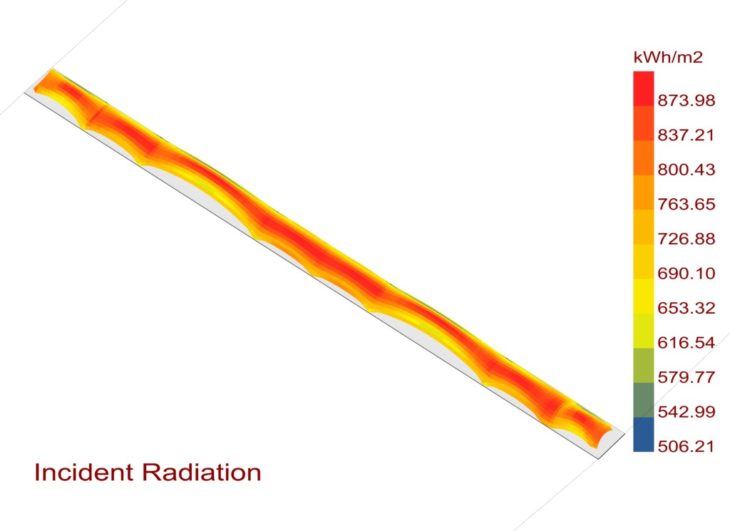Lleida’s Pedestrian Sleeve – Shell Optimization
Lleida’s Pedestrian Sleeve is a cover that shades the bridge over the El Segre river in a sleeve-like manner with the aspiration of allowing measured levels of photo-rays, heating, cooling, air ventilation, and spatial quality with considerations towards climatic conditions that the El Segre river are characterized by.

Project Overview
From several vehicular bridges over the El Segre river in Lleida, Spain, there exists on noticeable pedestrian bridge at 41.612444, 0.625778.

For the global environmental analysis, which was retrieved using the Ladybug plug in Grasshopper, it was shown that Dry Bulb Temperature fluctuates between 2 degrees Celsius and 32 degrees Celsius. Relative Humidity fluctuates between 31% and 94.5%. The month of July is the hottest of the summer period. In addition, DNR fluctuates between 0 Wh/m2 Celsius and 26444 Wh/m. Total Sky Cover is 0. The summer period has a very high DNR and no sky cover which indicates that Llidea is experiencing very hot summers characterized by high exposure to photo-rays.

The sun path diagrams can attest to the previously made deduction that the pedestrian bridge absorbs all the daylight that it receives with no obstruction. The pedestrian bridge receives uniform sun exposure of around 345 kWh/m2 because there are no buildings that cover the bridge or obstruct the direction of sunlight towards it.

Design Intentions
The only pedestrian bridge along the central district of Lleida is exposed to a lot of uniform sunlight: the design intention is to have a large surface areas for shading, small openings for light inlet, and opened sides for ventilation. The receptivity of incident radiation of the pedestrian bridge cover can reach up to 874 kWh/m2. This is an indicator that the pedestrians and the ground itself will be exposed to radiation a lot less.

Openings Study
The openings were placed on the sides that experience less exposure, whereas the highest point of the cover, which receives most exposure, will have small to no openings. The bridge used to receive around 345 kWh/m2 of sunlight until the massing of the design is implemented to it: the bridge’s sun receptivity becomes between 52 and 230 kWh/m2. The shell of the pedestrian bridge cover retains between 268 and 460 kWh/m2 of sunlight.

The designed perforations control the inlet of light based on intensity of exposure at 360 degrees. The bridge allows strong directed winds in transversal directions through the tunnel for cooling.

Pseudo-code


Fabrication
The pieces of fabrication are composed of strips of blocks. The openings are perforations that vary in size based on the stretchiness of the edges.

View

Lleida’s Pedestrian Sleeve is a project of IAAC, Institute for Advanced Architecture of Catalonia developed at the Master in Advanced Architecture in 2021 by: Nader Akoum and Aswin Kumar; Faculty: David Leon Andres & Ashkan Foroughi Dehnavi; Student Assistant: Laukik Lad & Uri Lewis
